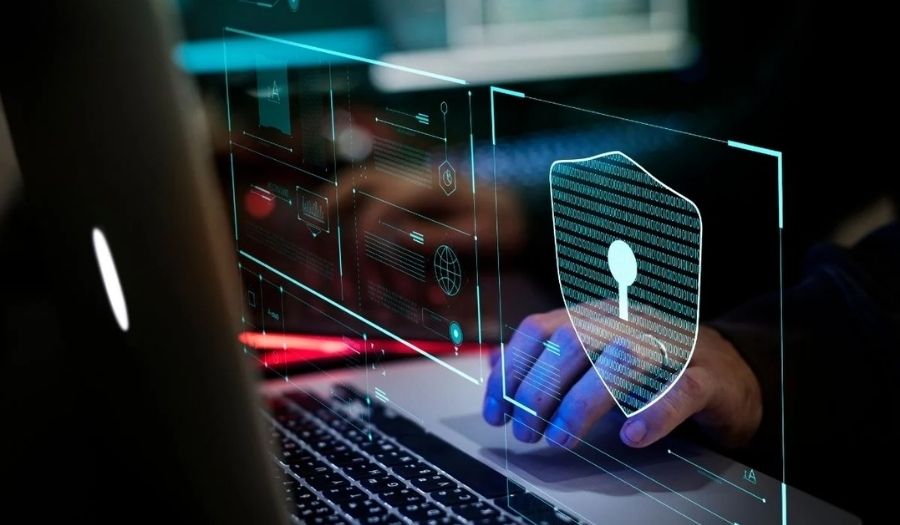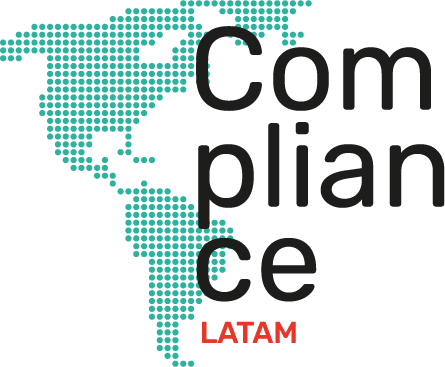
27-06-2023 | Noticias-en
In the digital age, the protection of personal data has become an issue of increasing importance throughout the world. Uruguay is no exception, since the country has established a solid legal framework to guarantee the privacy and security of personal information, which includes natural persons and also legal or ideally-existing persons. Through laws and regulations, the State has demonstrated its commitment to the protection of individual rights in the digital environment.
The Personal Data Protection Law
Law No. 18,331 on the Protection of Personal Data and Habeas Data Action, promulgated in 2008, and its complementary regulations, is the main legal instrument for the protection of information. This law establishes the principles and obligations for the processing of personal data, both by the public sector and the private sector. In addition, it created the Personal Data Regulatory and Control Unit (URCDP) as the authority in charge of supervising and enforcing the legislation.
Fundamental principles of the law
Uruguayan law is based on several fundamental principles. These include:
- Informed consent: The processing of personal data requires the informed, unequivocal and express consent of the data owner, unless there is a legal exception.
- Specific purpose: Personal data can only be collected and used for a specific and legitimate purpose, previously informed to the owner of the data.
- Security: Appropriate technical and organizational measures must be implemented to protect personal data and prevent its unauthorized access, loss or alteration.
- Proactive responsibility: Those responsible and in charge of treatment must adopt the measures tending to comply with the regulations, among them, privacy by design and by default, and carry out privacy impact assessments.
It also recognizes and protects the rights of the holders of personal data. These rights include access to the information collected, the rectification and updating of inaccurate data, the inclusion of data when there is a well-founded interest, and the deletion of data when it is no longer necessary.
Challenges
Although Uruguay has established a solid legal framework for the protection of personal data, since, for example, the latest modifications to the regulations date from January 2023, there are still challenges in this area. Constant technological progress and increasing digitization pose new challenges in terms of privacy protection. In addition, it is necessary to promote awareness and educate citizens about their rights and the best practices to protect their data in the digital environment.
“In Uruguay, data protection continues to have a huge presence, in national and international businesses. Uruguay has had the adequacy note from the European Commission since 2012, which represents a differential when receiving investments, and has motivated a continuous review of legislation to continue adapting it to the main trends and international standards. In addition to opportunities, the foregoing also represents challenges for companies that need a continuous review of their personal data management practices in an increasingly demanding context due to the internal adoption of analytics, big data and artificial intelligence solutions. ” point out Martín Ferrere and Cecilia Alberti, partner and senior associate of FERRERE Uruguay.
Compliance in the protection of personal data is of vital importance because compliance with regulations contributes to protecting the rights of individuals, strengthening customer trust, and improving competitiveness in the market by mitigating risks.
Companies and organizations that have a culture of compliance not only avoid sanctions and reputational consequences, but can also gain competitive advantages, resulting in better business opportunities.
For more information contact:

Carla Arellano | Counselor Ferrere | carellano@ferrere.com

15-06-2023 | Noticias-en
Through Executive Decree No. 754 of May 31, 2023, President Guillermo Lasso amended the Regulations to the Organic Code of the Environment (hereinafter, “ RCODA ”).
This reform is preceded by Judgment No. 22-18-IN/21 of September 8, 2021, in which the Constitutional Court: (i) Clarified that environmental consultation and prior consultation with indigenous communities are different consultations, and that Art. 184 of the CODA does not apply or replace the right to prior consultation of indigenous communities; (ii) Ordered that Art. 184 of the CODA must be interpreted according to the Constitution of the Republic, the jurisprudence of the Constitutional Court, and the Escazú Agreement; [1] (iii) Declared the unconstitutionality of Arts. 462 and 463 of the RCODA; and (iv) Ordered the President to adapt the RCODA to the resolution. Subsequently, the aforementioned Court issued Judgment No. 1149-19-JP/21 of November 10, 2021, in which the right to environmental consultation was developed.
The main reforms carried out by Decree No. 754 are the following:
1. The citizen participation process is reformed. This will no longer be governed by the technical standard of the Environmental Authority but by the one established in the RCODA, below. In addition, the majority opposition of those consulted is regulated, indicating that it is not binding. However, it is established that, if the environmental permit is granted despite majority opposition, it must be duly motivated.
2. All regulations in the RCODA regarding prior consultation with indigenous communities are repealed and Title III of Book III of the RCODA on the process of citizen participation for environmental consultation is amended:
2.1. It is established that the right to environmental consultation will consist of informing the community ” about the content of the environmental technical instruments, the possible environmental impacts and risks that could derive from the execution of projects, works or activities , as well as the relevance of the actions to be taken ”, record and compile your criteria, opinions and observations, and with this, consult you about the granting of the corresponding environmental permit.
2.2. It is added that the rules on the citizen participation process for environmental consultation are mandatory and apply in the case of an environmental license, always, and in the case of environmental registration for activities in the hydrocarbon and mining sector.
23. It is established that the citizen participation process for environmental consultation must be carried out prior to the granting of environmental permits. Additionally, the following changes are added to the process:
2.3.1. The Ombudsman’s Office must be notified so that this entity can proceed to provide support to the community and monitor the process. Their participation is mandatory, however, their unjustified absence will not lead to the nullity of the process.
2.3.2. The operator of the project, work or activity must deliver to the competent Environmental Authority the environmental technical instruments that it requires, as well as all communication materials or supplies for the didactic dissemination of such instruments (eg summaries, triptychs, slides, etc. ). All deliverables must be translated, when applicable.
2.3.3. To carry out the process, citizen participation mechanisms will be used, including the following: (i) Informative mechanisms (eg, informative assemblies, electronic pages, informative videos, delivery of informative documentation on environmental technical instruments, public information centers, workshops of environmental socialization, (ii) Call mechanisms (eg public call, personal invitations), and (iii) Consultation mechanisms (Consultation Assembly).
2.3.4. Special provisions to be considered when the consultation is carried out in the territories of indigenous peoples are included: provisions related to their ancestral languages and their forms of organization and decision-making.
2.3.5. The operator of the project, work or activity will be the one who must finance the environmental consultation process, its call and logistics. He must also provide all the facilities and provide all the necessary resources for its execution.
2.3.6. The process will be divided into two phases: (i) Informative Phase and (ii) Consultative Phase. The first is the delivery of information. In the second, there is a dialogue between the State and the community in order to present the opinions and observations of the community and consult regarding the issuance of the environmental permit.
3. The validity of all environmental permits that were issued before the reform is ratified. On the other hand, any project, work or activity registered in the SUIA until October 11, 2021 will follow the process prior to the reform. Processes initiated at a later date will continue with this reform, even if they have received a technical pronouncement, as well as projects, works and activities in the mining sector blocked in the SUIA by Judgment No. 1149-19-JP/21.
For more information contact:

Maria Rosa Fabara | Partner Bustamante Fabara | mrfabara@bustamantefabara.com

13-06-2023 | Noticias-en
On June 4, 2023, Law No. 31763 (the “Law”) was published in the Official Gazette “El Peruano”, a Law that modifies Law No. 29671, Consumer Protection and Defense Code (the “ CPDC”), standardizing the term for attention to claims for financial and insurance products or services, by means of which article 88.1 of the CPDC is amended, establishing that the entities of the financial and insurance system must resolve the claims presented by the consumers within a period not exceeding 15 business days.
On the other hand, the Law also indicates that, exceptionally, the Superintendence of Banking, Insurance and AFP (the “SBS”) may establish an extension term when the nature and complexity of the operation, product or service that is the subject of the claim or requirement justifies it. , a situation that must be made known to the consumer before the end of the initial term, without prejudice to the consumer’s right to appeal directly to the Consumer Authority.
Finally, it is established that the Law will enter into force sixty (60) business days from its publication in the Official Gazette El Peruano, and that the SBS, within a period not exceeding thirty (30) calendar days from Said publication must issue the necessary complementary norm or adapt the existing ones for its effective application.
For more information contact:

Mario Pinatte | CPB Partner | mpinatte@cpb-abogados.com.pe

08-06-2023 | Noticias-en
During the month of May, the Agreement approving the Transitory Provisions applicable to the General Rules for obtaining the opinion on compliance with tax obligations in the area of social security was published in the Official Gazette of the Federation.
The Agreement establishes that the opinion on compliance with tax obligations in the area of social security will be valid for fifteen calendar days from the date of its issuance, so that the taxpayer can formalize contracts with federal, state and municipal authorities.
The aforementioned authorities will verify that the term of validity of the compliance opinion coincides with the date on which the respective Contract is signed.
Finally, the taxpayer will authorize the IMSS to make public the result of the consultation on compliance with tax obligations in the area of social security.
The lawyers in the social security area are at your service to provide you with the support or advice you require on the matter.
For more information contact:

Juan José López de Silanes | Partner Basham, Ringe and Correa | lopez_de_silanes@basham.com.mx

02-06-2023 | Noticias-en
According to the “Law on the Liability of Legal Entities on Domestic Bribery, Transnational Bribery and other Crimes” (“Law”), legal entities (domestic or foreign), and other commercial figures (such as trusts, associations and foundations), they will be criminally responsible for their acts of corruption. Similarly, the parent companies for actions of their subsidiaries and affiliates. The foregoing, without prejudice to the individual criminal responsibility of individuals for the commission of said crimes.
The Law imposes criminal sanctions such as: (i) Fines between 1,000 and up to 10,000 base salaries (approximately between US$715,000.00 and US$7,150,000.00); (ii) Loss or suspension of state benefits or subsidies for a period of 3 to 10 years; (iii) Disqualification from participating in contests or public tenders for a period of 3 to 10 years; (iv) Total or partial cancellation of the operating or operating permit, the concessions or contracts obtained as a result of the crime; and (iv) Dissolution of the legal entity.
Among the Law’s innovations, there is an incentive for companies to implement an “Optional Organization, Crime Prevention, Management and Control Model” (“ Model ”); which will serve as a mitigation of their sanctions up to 40%.
For this reason, on August 26, 2021, the Regulations to the Law were published in the Official Gazette, with the aim of regulating and guiding the minimum content required for the Model -and thus opt for the benefits of the Law- (“ Regulations ”). The Model is optional to adopt, and can work both independently or as part of other models and local or global programs of the companies.
Some aspects to note about the Model, according to the requirements of the Regulation:
- Risk Assessment: The first stage for the implementation of the Model should be the assessment of risks derived from the geographic and business context of the company. The Regulation includes the parameters and methodology that must be followed for risk assessment (and its subsequent management). The risk assessment tool must contain the deadlines for its update.
- Due Diligence: The Model must include a due diligence mechanism for business partners that present a medium or high level of risk or exposure. The Regulations indicate the minimum items to be considered during the due diligence process. There is an obligation to maintain updated information on said business partners. The review can be done internally or with external resources.
- Communication: The Model and the tools that make up the prevention policy must be made available to all levels of the hierarchical structure of the company, its relational entities, and, if possible, its counterparts.
- Compliance Agent: The company must designate a person or entity, internal or external, that has sufficient means and powers to perform their duties, which will be in charge of supervising the operation and compliance with the Model. The person in charge must have functional autonomy from senior management.
- Monitoring: The adoption of the Model must be verifiable and of sustained application over time. Its operation must be monitored and evaluated in order to detect failures, weaknesses, opportunities for improvement, or any other element that may add to its proper functioning.
- Audit: The company must carry out an external audit of the Financial Statements maximum every three years. Likewise, you must carry out an internal audit as a crime prevention method, at least once a year.
- Complaint Mechanisms : The company must have clear complaint channels, well-established investigation procedures, and guarantees of protection for whistleblowers.
In Chapter IV of the Regulation, the minimum requirements for the SMEs Model are expressed, in a differentiated way – which are more accessible to comply with.
In general terms, the company must develop the necessary regulatory tools, internal control systems, programs and/or management models – always considering its own characteristics, its line of business, size, complexity, nature and particularities of action. Among the behaviors to regulate, there is the granting of gifts, hospitality, entertainment, representation expenses, client trips, entertainment, political contributions, donations for charitable purposes and sponsorships; as well as the risks of committing crimes of corruption.
For more information you can contact:

Juan Carlos Tristan | BLP Partner | jtristan@blplegal.com
Janelle Christie | BLP Associate | jchristie@blplegal.com

31-05-2023 | Noticias-en
In this article, we will examine the reality of tax compliance in countries such as Argentina, Chile, Uruguay, Paraguay, Bolivia, Peru, Colombia, Ecuador, Central America, Mexico, and the United States, and the measures that have been adopted to address the issue.
Tax compliance is a critical issue in every country in the world. Taxes are a vital source of revenue for governments, and failure to comply with tax obligations can have serious consequences for both individuals and businesses. In recent years, many Latin American countries have implemented measures to improve tax compliance and reduce tax evasion.
In addition to being a fundamental element for the administration of any country, it is a fundamental legal and ethical requirement for any company because they have the responsibility to comply with their tax obligations and pay the corresponding taxes in each jurisdiction. Failure to comply with tax can have serious consequences for a business, including fines, penalties, litigation, and damage to its reputation. Lack of tax compliance can affect the financial stability and sustainability of any company.
In Argentina , tax compliance has been a critical issue for companies for decades. Tax evasion and non-compliance with tax obligations are persistent problems that negatively affect the country’s economy. However, in recent years, many Argentine companies have taken steps to improve their tax compliance and reduce the risk of non-compliance. One of the main measures that organizations have taken is the implementation of tax compliance management systems that make it possible to monitor and manage their tax obligations more effectively, and reduce the risk of errors and omissions.
Chile , for its part, has a complex tax system that requires a high level of compliance by companies. In addition, the Chilean tax administration is very active in identifying and sanctioning companies that do not comply with their tax obligations. Another important aspect of tax compliance in Chile is cooperation with tax authorities. Many companies have established closer relationships with the tax administration and have implemented measures to ensure transparency and accuracy in their tax returns.
In Uruguay , Paraguay and Bolivia , tax compliance is also a critical issue for companies. Although the tax systems of these countries may be less complex than those of Argentina and Chile, compliance with tax obligations is still essential for the proper functioning of companies. In recent years, greater emphasis has been placed on auditing and identifying companies that do not comply with their tax obligations.
The tax systems of Peru , Colombia and Ecuador are complex and the tax administrations are very active in the examination and sanction of companies that do not comply with their tax obligations. It is common for the three jurisdictions that companies that operate there must invest in training programs for their employees and in tax compliance management systems to guarantee compliance with their obligations and reduce the risk of sanctions and fines.
The state of tax compliance in Central America varies from country to country, but in general, tax compliance is a critical issue for companies in the region. The tax systems in Central America are complex and the tax administrations are very active in examination and penalization.
In countries like Costa Rica and Panama , companies are required to file tax returns and pay taxes on income, value added, and social security contributions. In addition, companies must comply with certain information and documentation requirements, and tax administrations have implemented measures to improve inspection and penalize companies that do not comply with their tax obligations. It is important to note that international tax information exchange agreements and cooperation between tax administrations from different countries are becoming more frequent in the region, increasing the need for rigorous tax compliance.
In Mexico , the Mexican Tax Administration (SAT) is known for being rigorous in the examination of companies and individuals, and has implemented various measures in recent years to improve tax compliance, such as electronic invoicing and electronic accounting. The implementation of the Federal Tax Code in 2020 and the new Asset Forfeiture Law have further strengthened the legal framework and sanction mechanisms in tax matters. Mexican companies must pay attention to their tax obligations and take steps to ensure compliance, reduce the risk of penalties and fines, and improve their business reputation.
On the other hand, in the United Statess, the Internal Revenue Service (IRS), the US tax agency, is very active in monitoring and sanctioning companies that do not comply with their tax obligations, especially with regard to federal and state taxes. Businesses must file tax returns and pay income, employment, property, sales, and other taxes, as well as meet certain reporting and documentation requirements, such as filing W-2 and 1099 forms The Foreign Account Tax Compliance Act (FATCA) and the Foreign Account Tax Compliance Act (FBAR) are important regulations that companies doing business abroad must be aware of. Local companies must meet their tax obligations,
Although the region has different realities in terms of the maturity in the incorporation of compliance programs within companies and commercial organizations, it is important to highlight that in most of the countries of the continent there is a common denominator that is governed by the interest of governments to increase efforts to control the tax activities of all sectors of the economy.









